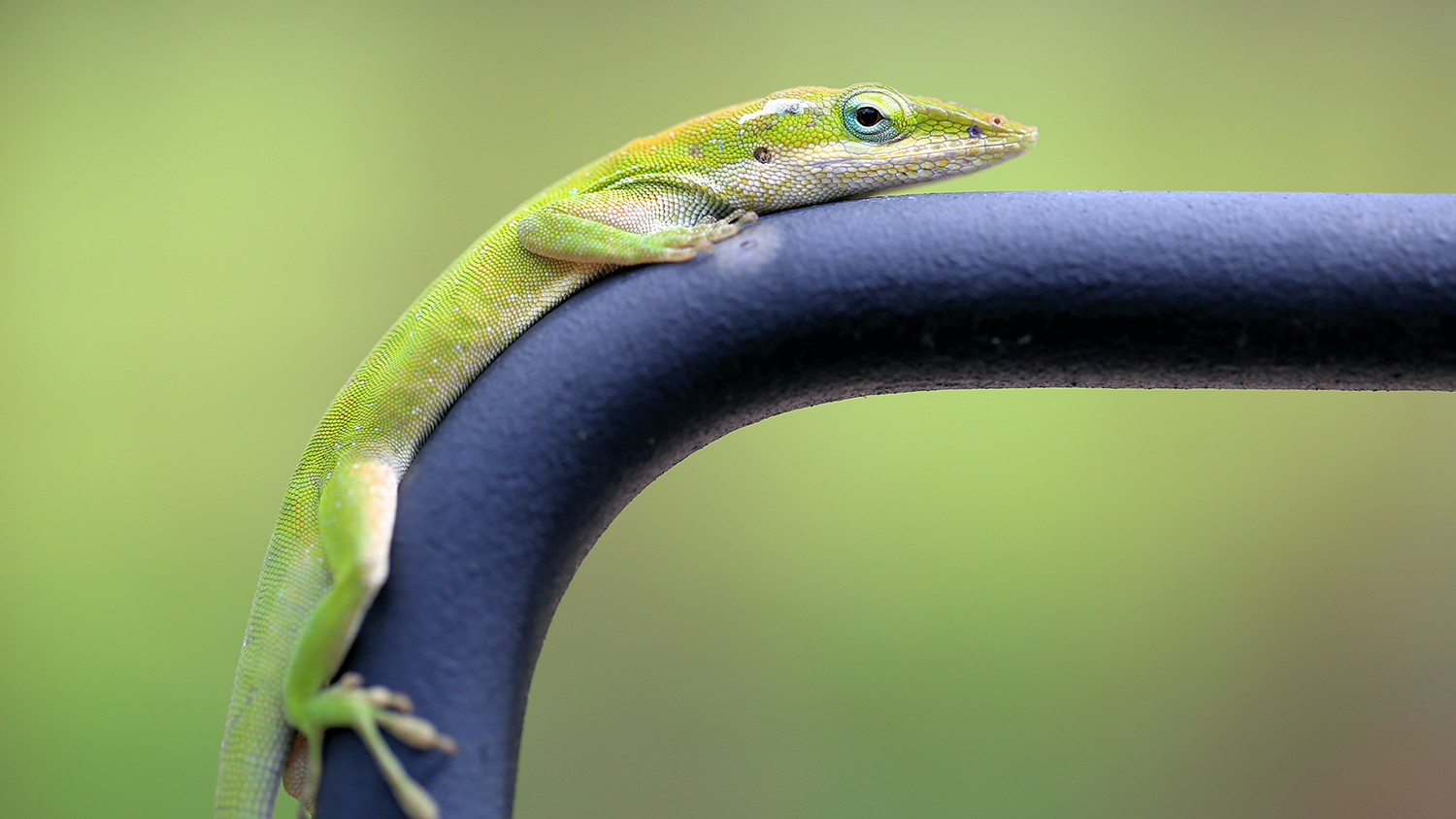If species are constantly evolving, then why do so many stay largely the same over long time periods? That question is called the “stasis paradox,” and it has puzzled biologists for a long time.
Recently, a group of researchers including North Carolina State University biologist Brian Langerhans set out to answer that question by studying an isolated group of anole lizards. They found that these animals experience natural selection that varies from year to year, but that over time, these incremental changes cancel each other out, and the species remain mostly unchanged. The work offers an answer to a longstanding issue in evolution – the stasis paradox.
The Abstract sat down with Langerhans to ask about the findings and the challenges involved in capturing and recapturing hundreds of anole lizards over several years.
The paper appears in Proceedings of the National Academy of Sciences. The work was led by James Stroud, assistant professor of biology at the Georgia Institute of Technology.
The Abstract (TA): Why use lizards to study evolution?
Langerhans: To better understand vertebrate evolution in the wild, and in particular how natural selection operates in the wild, it’s ideal to study a group of closely related species that have large numbers of individuals available for study, relatively short generation times, are readily capable of being observed/caught repeatedly over time, and for which we have a strong understanding of their ecology and natural history. Anolis lizards fit the bill perfectly. They represent a well-studied group of animals for field, lab and genetic studies of evolution.
TA: In the study you saw that “favored” traits for survival could vary from year to year. Is this how we thought that natural selection worked?
Langerhans: Yes and no. We know that it might operate that way in theory, but we just aren’t yet sure how common this degree of temporally fluctuating selection might be in nature. Based on many studies over the last several decades, we certainly know that natural selection is very commonly observed when studied in the wild in all sorts of taxa. But we simply don’t have a great understanding yet about how and why selection might vary over relatively short time scales because there haven’t yet been enough detailed studies, especially for multiple species within an ecological community. There are special cases that are known where selection has reversed or otherwise changed substantially over time in response to obvious factors such as drought or predator introduction, but whether this is a common phenomenon has been an open question.
TA: What does this mean for our understanding of evolution more broadly?
Langerhans: A major finding here is that it provides a possible answer to the “paradox of stasis.” Here’s what I mean: One big question in evolutionary biology asks why so many organisms don’t seem to change much over long stretches of time when we know today that evolution can happen quite rapidly. For example, there’s many examples of organisms, including so-called “living fossils” like the coelacanth, that haven’t changed much over extremely long timeframes. Evolutionary theory has long offered one major explanation for this, a particular form of natural selection called stabilizing selection.
The problem? Decades of intense research has seldom found evidence from nature for this type of selection – at least, this form of selection does not seem more prevalent than other forms of selection that should actually lead to change, NOT stasis. How could a relatively rarely observed phenomenon be responsible for such a major pattern of macroevolution?
Theory offers one possible solution: Rapid changes in selection over short timeframes can mimic the effects of persistent stabilizing selection, resulting in phenotypic stasis, or species traits that simply do not change much over time. This study provides evidence from a community of lizards that temporally fluctuating natural selection indeed adds up over time to create the predicted pattern of stabilizing selection, potentially explaining static traits within species.
Essentially, selection may change substantially over short time spans even in the absence of obvious environmental causes, and this can generate overall patterns of stabilizing selection that leads to stasis. Coincidentally, a separate study on Darwin’s finches in the Galapagos is also being published now, and comes to a remarkably similar conclusion: temporally varying selection creates a pattern of stabilizing selection in a multi-species finch community, explaining persistent phenotypes within each species despite strongly varying selection over time. Together, these studies definitely point toward a solution to the paradox of stasis.
TA: This was a multi-year study that involved tracking, capturing and recapturing hundreds of tiny anole lizards. How difficult was this study to carry out?
Langerhans: It wasn’t easy for several reasons. First, field work is rarely easy, and Dr. Stroud can attest to this in this case. But the authors have caught many, many thousands of lizards before, so they’re quite skilled at catching them. The lizards are caught with a small noose at the end of a long pole – so it’s not a case of chasing lizards and catching them by hand.
It’s also difficult to convince reviewers of grant proposals that you need to catch every lizard in a community, mark them, and then do this all over again and again for multiple years so that you might detect natural selection changing over time when there’s no guarantee that selection even fluctuates at all during these time spans.
Finally, there’s the question of how to best statistically analyze these sorts of data to properly rule out all possible alternative explanations and identify the extent to which selection truly varied, whether it really added up to stabilizing selection over time, and whether optimal traits within species actually corresponded to the average traits observed within species. But it’s all worth it.
- Categories:



